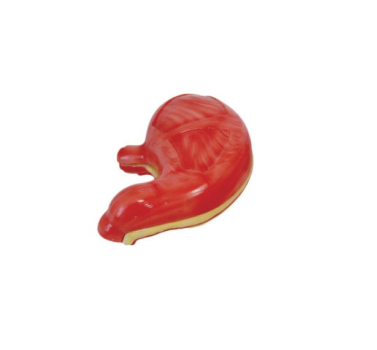21-05-2024
ADA MED SUPPLY LIMITED
Article tag: Stomach anatomy model trachea anatomy model
Stomach, as an important organ of human digestive system, has complex structure and diverse functions. In order to more intuitively understand the structure of the stomach, the anatomical model of the stomach has become a useful aid in medical education and scientific research. So how does the anatomical model of the stomach show the complex structure of the stomach in detail?

First, the anatomical model of the stomach accurately presents the overall shape of the stomach. The stomach is bag-like and consists of anterior wall, posterior wall, greater curvature and lesser curvature. The greater curvature is located in the lower part of the stomach, convex to the lower left, while the lesser curvature is concave to the upper right, forming a distinct angular notch. This form is not only good for storing food, but also pushes it down by peristalsis.
Next, the anatomical model of the stomach shows the entrance and exit of the stomach in detail. The entrance to the stomach, called the cardia, is where the esophagus joins the stomach. There is a sphincter at the cardia that controls the entry of food and prevents the reflux of stomach contents. The outlet of the stomach is the pylorus, which connects the stomach to the duodenum. There is also a sphincter in the pylorus that regulates the rate at which stomach contents are emptied.
Inside the stomach, the anatomical model of the stomach clearly shows the four layers of the stomach wall. From the inside to the outside, there are mucosal layer, submucosal layer, muscular layer and serous layer. The mucosal layer is the innermost layer of the stomach wall and is rich in glands that secrete digestive fluids such as stomach acid and pepsin to help digest food. The submucosa plays a cushioning and protective role. The muscular layer is the main component of the stomach wall and consists of three layers of smooth muscle responsible for the peristalsis and emptying of the stomach. The serous layer is the outermost layer of the stomach wall and is separated from other organs in the abdominal cavity.
In addition, the anatomical model of the stomach will pay special attention to the division of the stomach. The stomach is usually divided into four parts: the cardia, the fundus, the stomach body and the pylorus. Each part has its own unique functional and structural characteristics. For example, the fundus is the uppermost part of the stomach, adjacent to the diaphragm, which helps store food and gas. The stomach body is the main part of the stomach, containing rich parietal cells, can secrete gastric acid and digestive enzymes.
In conclusion, the anatomical model of the stomach provides us with an intuitive and comprehensive understanding of the complex structure of the stomach by accurately presenting the overall morphology of the stomach, showing the entrance and exit of the stomach in detail, clearly showing the four-layer structure of the stomach wall, and paying special attention to the division of the stomach. This will not only help with medical education and research, but also help us better understand and protect our stomachs.